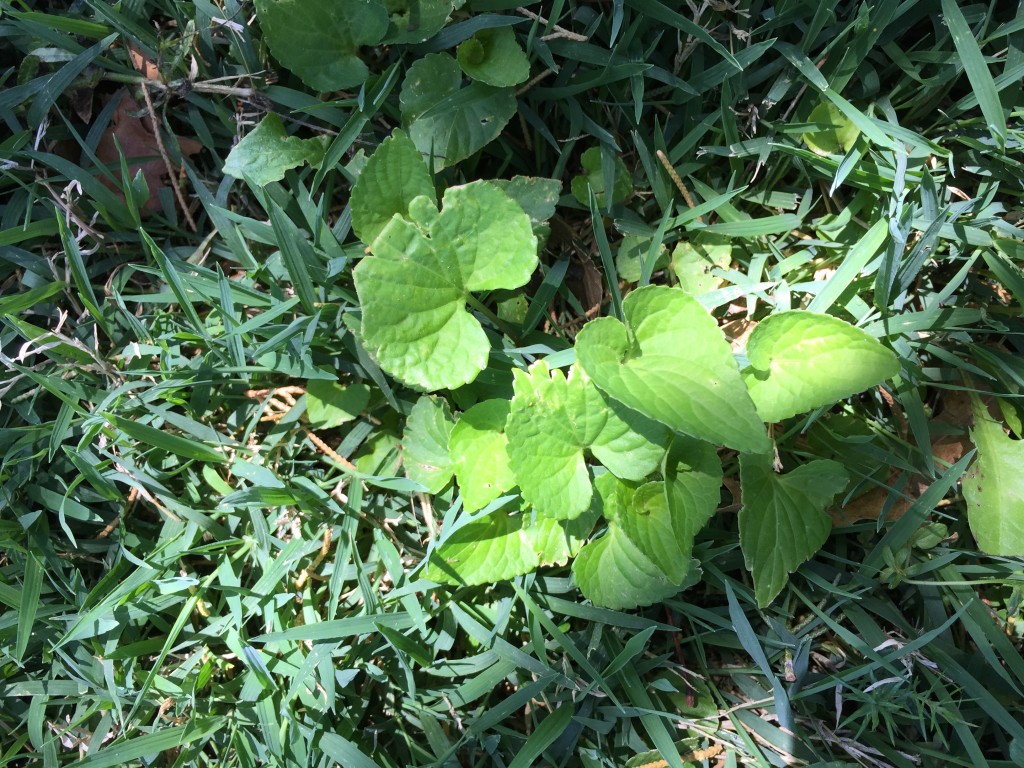(By Jared Hoyle, KSU Turfgrass Research and Extension)
Wild violet or common blue violet is a persistent perennial broadleaf weed commonly found in thin, shaded turfgrass. The plant has heart-shaped, shiny leaves and can spread by rhizomes which makes it a difficult to control weed. The flowers are deep purple or bluish purple. There are many similar species but collectively, turfgrass managers just refer to them as wild violet.
Control has been difficult but can be achieve if you choose the right herbicide and rate. Triclopyr has proven to be effective in cool-season turfgrass and is contained in many different products that are on the market. But the key is to make sure that you apply more than 0.5 lbs ae/A of triclopyr to result in effective control. Not all products that contain triclopyr when applied at the recommended rate will have enough triclopyr for effective control.
At a quick glace through the Turfgrass Weed Control for Professionals manual (Get you copy here – https://www.bookstore.ksre.ksu.edu/Item.aspx?catId=545&pubId=20239) I found a table that shows the rates of triclopyr-delivered by various products at the low and high label rate. From that chart, the following are products that contain ≥ 0.5 lbs ae/A of triclopyr, when applied at the correct rate.
- Aquasweep
- Chaser 2 Amine
- Chaser
- Crossroad
- Everett
- Confront
- 2-D
- Tailspin
- Turflon Ester Ultra
- Triclopyr 4
- Trycera
The take home message; To control wild violet in cool-season turfgrass use tricopyr (0.5 lbs ae/A), may different products contain triclopyr, not all products contain enough triclopyr, choose a product that when applied at the correct rate will result in at least 0.5 lbs ae/A of triclopyr.
If you are needing to control wild violet in bermduagrass or zoysiagrass; metsulfuron, sulfentrazon + metsulfuron and flazasulfuron are effective. Repeat applications are often required regardless of the herbicide.
Also, fall applications are best followed by spring applications.
Information from this post if from “Turfgrass Weed Control for Professionals” To get your copy today click here – https://www.bookstore.ksre.ksu.edu/Item.aspx?catId=545&pubId=20239
Always remember to READ THE LABEL for the correct rate, turfgrass tolerance, and specific instructions before application!!!
***Mention of trade names or commercial products in this article is solely for identification purposes and does not imply recommendation or endorsement, nor is criticism implied of similar products not mentioned by Kansas State University.***
Don’t forget to follow me on twitter @KSUTurf.
Also, visit our facebook page www.facebook.com/KSUTurf
